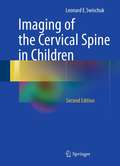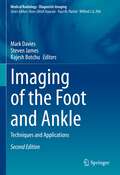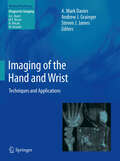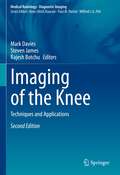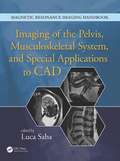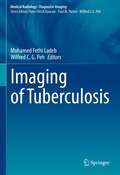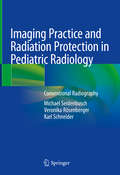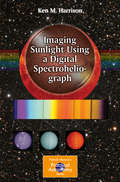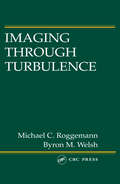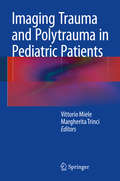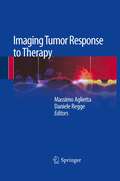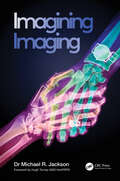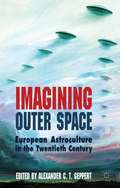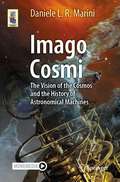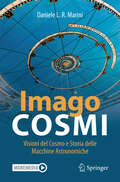- Table View
- List View
Imaging of the Cervical Spine in Children
by Leonard E. SwischukDr. Leonard Swischuk has revised his outstanding work on imaging the cervical spine in children. He draws upon his extensive experience to provide practitioners with an insightful approach to pediatric cervical spine injuries. The text covers developmental anatomy, normal variants, congenital anomalies, abnormalities of the dens, trauma, and miscellaneous abnormalities of the cervical spine. The book has several strengths that appeal to radiology residents, such as its succinct overview of the topic and helpful reference lists that guide readers to additional resources. Dr. Swischuk illustrates conditions he discusses with excellent plain film examples that help residents identify cases they are likely to encounter during board exams and in practice. Accompanying CT and MR images clarify and qualify the findings. Dr. Swischuk's direct writing style makes the complex content highly accessible, providing imaging residents with an invaluable introduction to pediatric cervical spine radiology.
Imaging of the Foot and Ankle: Techniques and Applications (Medical Radiology)
by Mark Davies Steven James Rajesh BotchuUp-to-date and comprehensive textbook on imaging of the foot and ankle. In the first part, the various techniques and procedures are discussed in detail. Individual chapters are devoted to: radiography, arthrography and tenography, computed tomography and CT arthrography, magnetic resonance imaging and MR arthrography, ultrasonography, and intra-articular injections. The second part documents the application of these techniques to diverse clinical problems and diseases, including: congenital and developmental disorders, trauma, tendon and ligament pathology, compressive neuropathies, infection, and the diabetic foot. Each chapter is written by an acknowledged expert, and a wealth of illustrative material is included.
Imaging of the Hand and Wrist
by A. Mark Davies Andrew J. Grainger Steven J. JamesIn the past, radiographs of the hand have been described as the "skeleton's calling card", showing manifestations of many different diseases. As hand and wrist imaging has become increasingly sophisticated, this observation has become more true than ever. This is a comprehensive, up-to-date textbook on imaging of the hand and wrist. In the first part of the book, the various imaging techniques are discussed in detail. Individual chapters are devoted to radiography, ultrasound, CT, MRI and nuclear medicine. The second part of the book gives an authoritative review of the various pathologies that may be encountered in the hand and wrist, encompassing congenital and developmental abnormalities, trauma, and the full range of localized and systemic disorders. Each chapter is written by an acknowledged expert in the field, and a wealth of illustrative material is included. This book will be of great value to musculoskeletal and general radiologists, orthopaedic surgeons and rheumatologists.
Imaging of the Knee: Techniques and Applications (Medical Radiology)
by Mark Davies Steven James Rajesh BotchuAn up-to-date and comprehensive review of the discipline of imaging of the knee. The first part discusses the various techniques employed when imaging the knee. Individual chapters are devoted to radiography, arthrography, computed tomography and CT arthrography, magnetic resonance imaging and MR arthrography, and ultrasonography. The second part then documents the application of these techniques to the diverse clinical problems and diseases encountered in the knee. Among the many topics addressed are: congenital and developmental abnormalities, trauma, meniscal pathology, and others. Each chapter is written by an acknowledged expert in the field.
Imaging of the Pelvis, Musculoskeletal System, and Special Applications to CAD
by Luca SabaMagnetic resonance imaging (MRI) is a technique used in biomedical imaging and radiology to visualize internal structures of the body. Because MRI provides excellent contrast between different soft tissues, the technique is especially useful for diagnostic imaging of the brain, muscles, and heart.In the past 20 years, MRI technology has improved si
Imaging of the Temporomandibular Joint
by Ingrid Rozylo-Kalinowska Kaan OrhanThis superbly illustrated book is designed to meet the demand for a comprehensive yet concise source of information on temporomandibular joint (TMJ) imaging that covers all aspects of TMJ diagnostics. After introductory chapters on anatomy, histology, and the basics of radiological imaging, detailed guidance is provided on the use and interpretation of radiography, CT, CBCT, ultrasound, MRI, and nuclear medicine techniques. Readers will find clear presentation of the imaging findings in the full range of TMJ pathologies, from intrinsic pathological processes to invasion by lesions of the temporal bone and mandibular condyle. Careful attention is also paid to the technical issues confronted when using different imaging modalities, and the means of resolving them. The role of interventional radiology is examined, and consideration given to the use of arthrography and arthrography-guided steroid treatment. In addition, an overview of recent advances in research on TMJ diagnostics is provided. Imaging of the Temporomandibular Joint has been written by an international team of dedicated authors and will be of high value to clinicians in their daily practice.
Imaging of Tuberculosis (Medical Radiology)
by Mohamed Fethi Ladeb Wilfred C. G. PehThis book provides an extensive overview of the role of imaging in the detection, diagnosis, management, and follow-up of tuberculosis. Chapters cover the disease's epidemiology and pathophysiology, microbiological diagnosis and pathology relevant to radiologists, and the distinct aspects of imaging tuberculosis at various locations and body systems. This book discusses recent advances in imaging pertaining to tuberculosis, and addresses the approach to patients with tuberculosis and HIV co-infection. The final chapter offers an algorithmic approach to the diagnosis and management steps of tuberculosis. Imaging of Tuberculosis is an updated and comprehensive reference source that covers imaging of tuberculosis in a structured fashion and is valuable for radiologists.
Imaging Optics
by Joseph Braat Peter TörökThis comprehensive and self-contained text presents the fundamentals of optical imaging from the viewpoint of both ray and wave optics, within a single volume. Comprising three distinct parts, it opens with an introduction to electromagnetic theory, including electromagnetic diffraction problems and how they can be solved with the aid of standard numerical methods such as RCWA or FDTD. The second part is devoted to the basic theory of geometrical optics and the study of optical aberrations inherent in imaging systems, including large-scale telescopes and high-resolution projection lenses. A detailed overview of state-of-the-art optical system design provides readers with the necessary tools to successfully use commercial optical design software. The final part explores diffraction theory and concludes with vectorial wave propagation, image formation and image detection in high-aperture imaging systems. The wide-ranging perspective of this important book provides researchers and professionals with a comprehensive and rigorous treatise on the theoretical and applied aspects of optical imaging.
Imaging Our Solar System: The Evolution of Space Mission Cameras and Instruments (Springer Praxis Books)
by Bernard HeninAs we speak, stunning new snapshots of our Solar System are being transmitted to Earth by a fleet of space probes, landers, and rovers. Yet nowadays, it is all too easy to take such images for granted amidst the deluge of competing visuals we scroll through every day. To truly understand the value of these incredible space photos, we first need to understand the tools that made them possible.This is the story of imaging instruments in space, detailing all the technological missteps and marvels that have allowed us to view planetary bodies like never before. From the rudimentary cameras launched in the 1950’s to the cutting-edge imaging instruments onboard the Mars Perseverance rover, this book covers more than 100 imaging systems sent aboard various spacecraft to explore near and distant planetary bodies. Featured within are some of the most striking images ever received by these pioneering instruments, including Voyager’s Pale Blue Dot, Apollo’s Blue Marble, Venera’s images from the surface of Venus, Huygens’ images of Titan, New Horizon’s images of Pluto and Arrokoth, and much more. Along the way, you will learn about advancements in data transmission, digitization, citizen science, and other fields that revolutionized space imaging, helping us peer farther and more clearly across the Solar System.
Imaging Practice and Radiation Protection in Pediatric Radiology: Conventional Radiography
by Michael Seidenbusch Veronika Rösenberger Karl SchneiderThis book offers the reader sound advice on how to perform optimal conventional pediatric radiographs and how to obtain quick and easy organ dose estimates in order to improve the optimization process in pediatric imaging. Clear guidelines are provided for minimization of the radiation exposure of children through optimization of the radiation exposure conditions, and conversion coefficients are presented for calculation of the organ doses achieved in organs and tissues during conventional pediatric radiography, taking into consideration both optimal and suboptimal radiation field settings. Previously published conversion coefficients have failed to represent the variation in radiation field settings in daily clinical routine, which has made it difficult for the pediatric radiologist to estimate the impact of the field settings on absorbed doses in organs and tissues. The aim of this book, co-written by a pediatric radiologist, a physician and physicist, and a medical radiation technologist, is to address this issue by providing, for the first time, a thorough overview of clinical radiation field settings and their implications for radiation protection. An accompanying volume is devoted to fluoroscopy.
Imaging Spine After Treatment: A Case-based Atlas
by Tommaso Scarabino Saverio Pollice Giuseppe Carmine Iaffaldano Domenico CatapanoThis atlas illustrates the characteristics of imaging after surgical spine treatment. The previous edition has been thoroughly updated and new surgical treatment options are presented. Furthermore, all clinical cases feature new images with the new sequences available from the manufacturers of Magnetic Resonance scanners. The imaging methods presented in the book are MRI, involving the use of routine basic sequences and advanced study techniques, and CT with and without administration of contrast medium. The modifications of the spine, both healthy and pathological, that can occur immediately after surgical treatment and in the long term, are described in detail. Atlas contents are organized in a general part, with the classification of spine pathology and the surgical treatment options, and a part with clinical cases enriched by a wealth of images. This easy-to-consult publication addresses neuroradiologists who wish to gain an adequate expertise in post-treatment examinations reporting in order to be able to perform an effective differential diagnosis.
Imaging Sunlight Using a Digital Spectroheliograph
by Ken M. HarrisonKen M. Harrison's latest book is a complete guide for amateur astronomers who want to obtain detailed narrowband images of the Sun using a digital spectroheliograph (SHG). The SHG allows the safe imaging of the Sun without the expense of commercial 'etalon' solar filters. As the supporting software continues to be refined, the use of the digital spectroheliograph will become more and more mainstream and has the potential to replace the expensive solar filters currently in use. The early chapters briefly explain the concept of the SHG and how it can produce an image from the solar spectrum. A comparison of the currently available narrow band solar filters is followed by a detailed analysis of the critical design, construction and assembly features of the SHG. The design and optimum layout of the instrument is discussed to allow evaluation of performance. This information explains how to assemble a fully functional SHG using readily available components. The software required to process the images is explained and step by step examples provided, with various digital instruments around the world highlighted based on input from many experienced amateurs who have shared their experience in building and using their spectroheliographs. The final chapters provide a historical overview of the traditional spectroheliograph and the later spectrohelioscope, from the initial G. E. Hale and Deslandres concepts of the 1890's through to the later work by Veio and others. The construction and performance of various instruments is covered in detail, and provides a unique opportunity to record and appreciate the groundbreaking researches carried out by amateurs in the 20th century. This is an absolutely up to date book which fully addresses the watershed, game changing influence of the digital imaging revolution on the traditional spectroheliograph.
Imaging Technologies and Transdermal Delivery in Skin Disorders
by Chenjie Xu XiaomengWang Manojit PramanikThis book covers the latest understanding about the major skin disorders, the development of imaging technologies for skin diagnosis, and the applications of micro/nano-technologies for the treatment of skin complications.
Imaging the Messier Objects Remotely from Your Laptop
by Len AdamThis is a guide for anyone interested in practical astronomy but intimidated by the idea of investing in a telescope. It explores the world of remote observing, which requires nothing more than a laptop and an Internet connection. The book aims to make readers comfortable navigating the plethora of online equipment at their disposal and to show that a challenge like imaging the Messier objects can be fun, simple, and achievable for all.In this text, all 110 Messier objects are discussed, each one remotely imaged with clear instructions on what telescope and camera combinations give the best results. Common astronomical phrases and units are all explained and illustrated to help newcomers get a grasp of terminology. Tidbits of history and quotes from Messier and other astronomers round out this beginner-friendly read, which also features a handy Quick Reference Image Library.
Imaging the Southern Sky
by Stephen Chadwick Ian CooperThis book is not about imaging from the southern hemisphere, but rather about imaging those areas of the sky that lie south of the celestial equator. Many of the astronomical objects presented are also accessible to northern hemisphere imagers, including those in both the USA and Europe. Imaging the Southern Sky discusses over 150 of the best southern objects to image, including nebulae, galaxies, and planetaries, each one accompanied by a spectacular color image. This book also includes sections on both image capturing and processing techniques and so makes an ideal all-in-one introduction. Furthermore, because it contains an in-depth study of how to capture all the objects, many of which are rarely imaged by amateurs and professionals alike, it is also extremely useful for the more advanced imager.
Imaging Through Turbulence
by Michael C. Roggemann Byron M. WelshLearn how to overcome resolution limitations caused by atmospheric turbulence in Imaging Through Turbulence. This hands-on book thoroughly discusses the nature of turbulence effects on optical imaging systems, techniques used to overcome these effects, performance analysis methods, and representative examples of performance. Neatly pulling together widely scattered material, it covers Fourier and statistical optics, turbulence effects on imaging systems, simulation of turbulence effects and correction techniques, speckle imaging, adaptive optics, and hybrid imaging. Imaging Through Turbulence is written in tutorial style, logically guiding you through these essential topics. It helps you bring down to earth the complexities of coping with turbulence.
Imaging Trauma and Polytrauma in Pediatric Patients
by Vittorio Miele and Margherita TrinciThis book provides a detailed and comprehensive overview of the role of diagnostic imaging in the assessment and management of trauma and polytrauma in children. The coverage includes imaging of injuries to the head, thorax, abdomen, bone and musculoskeletal system, with careful attention to the newest imaging techniques, imaging during the course of recovery and imaging of complications. A series of illustrative cases underline the prognostic value of imaging. In addition, an individual chapter is devoted to diagnostic imaging in cases of child abuse. The book concludes by discussing informed consent and medicolegal issues related to the imaging of pediatric traumatic emergencies. Imaging Trauma and Polytrauma in Pediatric Patients will be invaluable in enabling radiologists and clinicians to identify the main features and signs of injuries on a wide range of imaging techniques, including X-ray, ultrasonography, computed tomography and magnetic resonance imaging.
Imaging Tumor Response to Therapy
by Daniele Regge Massimo AgliettaMeasurement of solid tumor response to treatment relies mainly on imaging. WHO tumor response criteria and, more recently, RECIST (response evaluation criteria in solid tumors) have provided means to objectively measure tumor response in clinical trials with imaging. These guidelines have been rapidly adopted in clinical practice to monitor patient treatment and for therapy planning. However, relying only on anatomical information is not always sufficient when evaluating new drugs that will reduce a tumor's functionality while preserving its size. Finding more reliable and reproducible measures of tumor response is one of the most important and difficult challenges facing modern radiology as it requires an entirely new approach to imaging. The aim of this book is to address the assessment of response to treatment by adopting a multidisciplinary perspective, just as occurs in real life in a comprehensive cancer center. Oncologists and imaging experts consider two cancer models, locally advanced disease and metastatic disease, jointly exploring both conventional and advanced means of measuring response to standard treatment protocols and new targeted therapies.
Imagining Imaging
by Michael R. JacksonFrom Roentgen to Rembrandt, Hounsfield to Hollywood and Vesalius to videogames, Imagining Imaging explores the deeply entwined relationship between art (and visual-based culture) and radiology / medical imaging. Including artworks from numerous historical eras representing varied geographic locations and visual traditions, alongside a diverse range of contemporary artists, Dr Jackson argues that the foundations of medical image construction and interpretation were laid down in artistic innovations dating back hundreds and thousands of years. Since the discovery of X-rays, artists and moviemakers have, in turn, drawn rich inspiration from radiographic imagery and concepts, but the process of cross-pollination between art and science has continued, with creative endeavour continuing to mould medical imaging examinations to this day.Blending a unique mix of art, science and medical history, together with aspects of visual neurophysiology and psychology, Imagining Imaging is essential reading for radiologists, radiographers and artists alike. Peppered with familiar TV and film references, personal insights into the business of image interpretation, and delivered in an accessible and humorous style, the book will also appeal to anyone who enjoys looking at pictures.Key features: Engaging synthesis of art and medical history, combined with anecdotes and experiences from a working clinical radiologist Diverse range of visual reference points including astronomy, botany and cartography, alongside comprehensive discussion of medical imaging modalities including plain radiography, ultrasound, CT and MRI 200 full colour illustrations
Imagining Outer Space: European Astroculture In The Twentieth Century (Palgrave Studies in the History of Science and Technology)
by Alexander C.T. GeppertImagining Outer Space makes a captivating advance into the cultural history of outer space and extraterrestrial life in the European imagination. How was outer space conceived and communicated? What promises of interplanetary expansion and cosmic colonization propelled the project of human spaceflight to the forefront of twentieth-century modernity? In what way has West-European astroculture been affected by the continuous exploration of outer space? Tracing the thriving interest in spatiality to early attempts at exploring imaginary worlds beyond our own, the book analyzes contact points between science and fiction from a transdisciplinary perspective and examines sites and situations where utopian images and futuristic technologies contributed to the omnipresence of fantasmatic thought. Bringing together state-of-the-art work in this emerging field of historical research, the volume breaks new ground in the historicization of the Space Age.
Imagining Outer Space
by Alexander C. T. GeppertImagining Outer Space makes a captivating advance into the cultural history of outer space and extraterrestrial life in the European imagination. How was outer space conceived and communicated? What promises of interplanetary expansion and cosmic colonization propelled the project of human spaceflight to the forefront of twentieth-century modernity? In what way has West-European astroculture been affected by the continuous exploration of outer space? Tracing the current thriving interest in spatiality to early attempts at exploring imaginary worlds beyond our own, the book's authors analyze contact points between science and fiction from a transdisciplinary perspective and examine sites and situations where utopian images and futuristic technologies contributed to the omnipresence of fantasmatic thought. Bringing together state-of-the-art work in this emerging field of historical research, thevolumebreaks new ground in the historicization of the Space Age. "
Imagining Outer Space: European Astroculture in the Twentieth Century (Palgrave Studies in the History of Science and Technology)
by Alexander C.T. GeppertImagining Outer Space makes a captivating advance into the cultural history of outer space and extraterrestrial life in the European imagination. How was outer space conceived and communicated? What promises of interplanetary expansion and cosmic colonization propelled the project of human spaceflight to the forefront of twentieth-century modernity? In what way has West-European astroculture been affected by the continuous exploration of outer space? Tracing the thriving interest in spatiality to early attempts at exploring imaginary worlds beyond our own, the book analyzes contact points between science and fiction from a transdisciplinary perspective and examines sites and situations where utopian images and futuristic technologies contributed to the omnipresence of fantasmatic thought. Bringing together state-of-the-art work in this emerging field of historical research, the volume breaks new ground in the historicization of the Space Age.
Imago Cosmi: The Vision of the Cosmos and the History of Astronomical Machines (Astronomers' Universe)
by Daniele L. MariniThis book takes the reader on an exploration of the Cosmos, from Mesopotamia and Egypt to China; it unveils the fascinating development of astronomy and mathematics. After an overview of the origins of these subjects, highlighting the contributions of Greek astronomers, the Arab culture, and Copernicus' solar system model, the book delves into the revolutionary work of Tycho Brahe, Johannes Kepler, Galileo Galilei, and Isaac Newton, leading to a comprehensive understanding of the solar system. Special attention is given to the instruments used by ancient astronomers, including the most important astronomical clocks and planetary machines. In light of this, the author examines Kepler's almost unknown design of a planetary machine and offers an interpretation using virtual reality techniques. The book also highlights the Chinese view of the Cosmos and the evolution of its astronomy and astronomical machines, offering readers a unique perspective and insight into the relationship between astronomy and technology in different cultures. Finally, the author provides a practical approach to understanding the construction and mechanics of astronomical machines, exploring the process of designing and manufacturing a Tellurium. The reading is enriched with short videos of the Tellurium, along with a translation of the description of the planetary machine by Christian Huygens. In addition, it provides a unique glimpse into the religious influences on astronomical studies during the mid-1700s through the translation of Johann Albrecht Bengel's book Cyclus. This book is a must-read for anyone interested in the history of science and technology. It appeals to astronomers, mathematicians, physicists, and historians of science and technology alike, providing fascinating descriptions and insightful analysis of the vision of the Cosmos from its earliest conceptions to the present day.
Imago Cosmi: Visioni del Cosmo e Storia delle Macchine Astronomiche
by Daniele L. MariniQuesto libro conduce il lettore in un viaggio esplorativo attraverso il Cosmo, dall'antica Mesopotamia ed Egitto fino alla Cina, svelando il fascino dello sviluppo dell'astronomia e della matematica che ha dato vita alla rivoluzione scientifica. Dopo una panoramica sulle origini di questi campi di studio, evidenziando i contributi degli astronomi greci, della cultura araba e del modello eliocentrico di Copernico, il testo si addentra nel lavoro rivoluzionario di Tycho Brahe, Johannes Kepler, Galileo Galilei e Isaac Newton, offrendo una comprensione approfondita del sistema solare. Gli strumenti utilizzati dagli astronomi, tra cui gli orologi astronomici e le macchine planetarie più significative, sono al centro dell'attenzione, consentendo di comprendere meglio la formazione e la diffusione della concezione del Sistema Solare. Inoltre, l'autore esamina il poco conosciuto progetto di una macchina planetaria di Kepler e ne offre un'interpretazione utilizzando tecniche di realtà virtuale. Il libro mette in luce anche la visione cinese del Cosmo e l'evoluzione della sua astronomia e delle relative macchine, offrendo ai lettori una prospettiva unitaria sulla concezione del cosmo e della tecnologia in Occidente e nell'Estremo Oriente. I dati degli ingranaggi e dei periodi planetari delle macchine esaminate nel testo sono raccolti tra gli annessi web del libo. L'esperienza di lettura è arricchita dalla traduzione della descrizione della macchina planetaria di Christian Huygens e dalla trattazione del progetto e della realizzazione di un Tellurium per comprendere la costruzione e la meccanica delle macchine astronomiche. Inoltre, viene offerta una visione unica sulle influenze religiose sugli studi astronomici del XVIII secolo attraverso la traduzione del libro Cyclus di Johann Albrecht Bengel. Breve materiale video sull'Antikythera, sul Tellurium dell'autore e su quello di Philip M. Hahn completa la documentazione. Questo libro è un must per chiunque sia interessato alla storia della scienza e della tecnologia, appassionando sia gli astronomi, i matematici e i fisici che gli storici della scienza e della tecnologia, fornendo descrizioni affascinanti e analisi illuminanti della visione del Cosmo dalle sue prime concezioni fino ai giorni nostri. Video e documenti disponibili tramite app: scarica gratuitamente l'app SN More Media, scansiona il link con il tasto play e accedi ai video e ai documenti direttamente sul tuo smartphone o tablet.
IMF: Recent Economic Developments (Imf Working Papers #Imf Staff No. 97/107)
by International Monetary FundA report from the International Monetary Fund.
